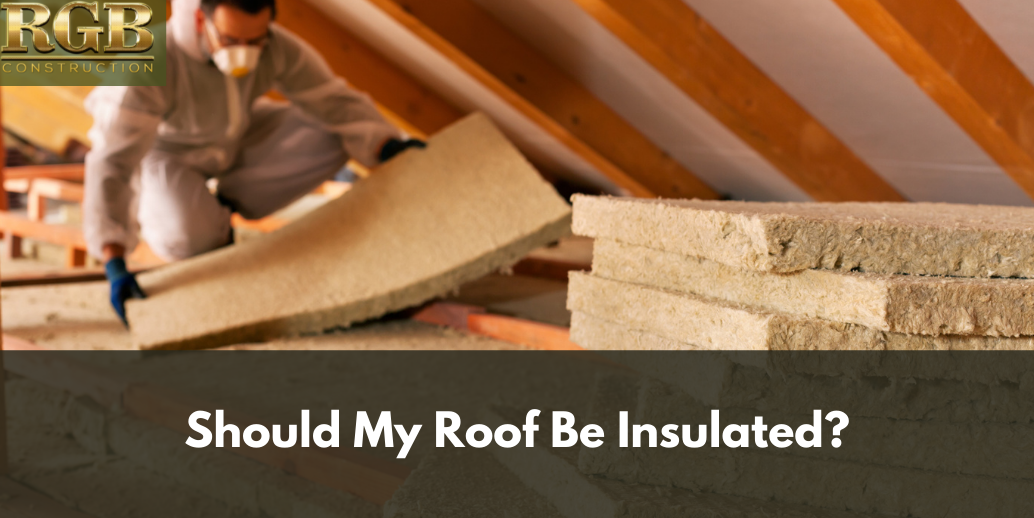An insulated home is essential to prevent damage to your roof. Insulation is known to cut energy costs in half. You might be torn whether you need to insulate your roof. It makes sense in some cases, especially if you have an attic as part of your living space. Here are a few things that you need to know about insulating the roof of your home.
Insulating the Roof
If you have a ceiling that is part of the roofing deck, like a cathedral ceiling, you want to insulate your roof. Insulating a roof may be a great idea to help regulate temperatures in your attic, especially if you’re going to use those spots as a living space.
Some of the commonly used materials for the insulation include radiant barriers, spray foam, and rigid foam insulation boards. The type of material used will depend on the recommendation from your licensed roofing company.
The Advantages of Roof Insulation
There are plenty of advantages to installing insulation for your roof. Energy performance is one reason why homeowners insulate their roofs. For example, slab-on-grade homes in humid and hot climates often have air conditioning ducts within the attic. These ducts can remain cooler when insulation is added to the roof. An insulated roof provides better energy savings because it puts less stress on the air conditioner. In most homes, duct leaks are common problems when the roof is not sealed.
In those colder climates, an insulated roof can prevent moisture damage. During the winter, frost and ice dams on the roof deck can lead to moisture issues for your roof, especially if you have a Cape Cod-style home. When moisture seeps into your roofing area, it can lead to mold and moisture. Once those damages occur in your home, you can expect to pay for costly repairs. You want to prevent that type of damage by insulating your roof.
Types of Insulation
You can insulate roofs in several ways. One of the most common is rigid foam board roof insulation. If you have a sloped roof assembly, then you might want to use this type of insulation. It is installed on the slope rather than placing the insulation in the attic’s ceiling.
Cathedral ceilings can benefit from a roofing installation, primarily if the ceiling is located over a room. This insulation is installed on the board near the roof sheathing. In some cases, the rigid foam board installation will require three different layers of insulation. These different types of insulation can limit the amount of condensation, reduce air leaks, prevent ice dams, and interrupt thermal bridging. Along with that, higher R-values can be achieved with help from the insulation.
Another type of insulation system is a radiant barrier. These systems can reduce the amount of heat gain on the roof’s surface. When your home gets hot, that is caused by the sun’s radiant energy beating down on the surface. All of that energy travels from your roof into the rest of your home. While air ducts can reduce the heat transfer, a radiant barrier can keep the heat from reaching the interior of your home.
You can place a radiant barrier under the roof’s sheathing. At this location, you will have the most effective barrier to stop those hot rays of the sun. With a radiant barrier, the home will remain cool. If you have an attic, you will notice that the temperatures remain closer to the rest of the house. In one study, a single radiant barrier can eliminate about 95 percent of radiant heat transfer. A radiant barrier made with foil is one of the most affordable options. They are also easier to install than other types of insulation.
Radiant barriers are great for those homes in hot and humid climates. You might want to install a radiant barrier during new home construction. However, you can still install these barriers to retrofit an existing home.
Roof Insulation Depends on Your Home’s Climate
If you are trying to decide whether to insulate your roof, it will depend on your climate. For example, those homeowners in hot and humid climates want to have insulation with a rating of at least R-19. You can always consult with reputable roofing companies to see what insulation would be best suited for your specific home.
Conduct an Energy Audit Test
If you have an older home, you want to find ways to keep an energy-efficient home. With an energy audit test, you can decide on the best options to keep down your energy costs. An energy audit gives you an analysis of your home’s ability to conserve energy. These tests are helpful for those who have high energy bills.
You can schedule a basic test from your electric or gas utility provider. However, some private companies, like roofing contractors, can conduct these tests. In some cases, energy audits use infrared cameras to pinpoint those spots that lack insulation or have air leaks.
Roofing Insulation Is Important
While you can insulate your ceiling, it is also a good idea to take care of your roof. This insulation is vital for those homes that use an attic as a living space. In some homes with low pitch or cathedral ceilings, you will want to insulate at the roofline.
Along with that, homes in hot and humid climates should think about insulating the roof. All that radiant heat can beat down on the roof and cause your home to be hot throughout the day. You can stop that uncomfortable heat with an insulation system, such as a radiant heat barrier.
Let Us Help With Your Roof
If you have questions on the importance of roof insulation, you want to reach out to the experts. At RGB Construction, we can help to answer any of your questions. We will advise you on whether roof insulation is the best choice for your home. Along with that, we offer a wide variety of roofing services. You can schedule a consultation by calling our office at 856-264-9093.








